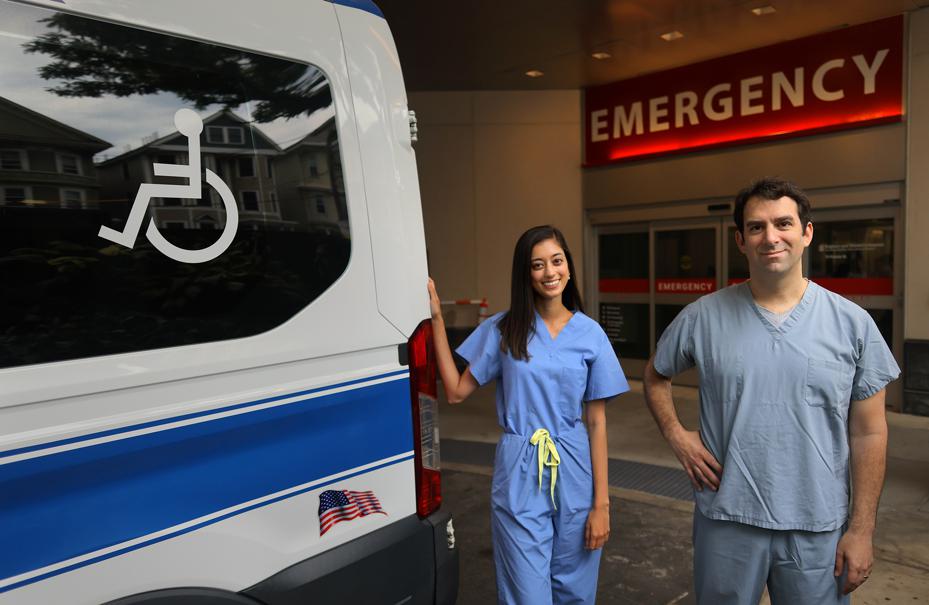For Dr. Jeremy Faust, July 1 is like New Year’s Day. That’s when thousands of new medical school graduates enter teaching hospitals across the country and provide care to patients as doctors for the first time.
“Everything is new and full of possibilities,’’ said Faust, an emergency physician at Brigham and Women’s Hospital.
With that excitement also comes a seemingly perennial debate around a phenomenon called the “July effect’’ — the idea that the inexperience of first-year residents, commonly called interns, might lead to a decrease in patient safety or increase in medical errors.
While some studies have found disruptions and medical errors can creep up, there’s no reason to avoid hospitals in July if you need care.
What goes on behind the scenes at a teaching hospital in July?
Dr. John Q. Young, chair of psychiatry at the Zucker School of Medicine at Hofstra University and Northwell Health in Hempstead, N.Y., compares the transition to a football coach substituting a quarter of his most experienced players with newer ones during the fourth quarter of a high-stakes game.
Not only do new interns start, but other residents and physicians also move into more senior roles. That means nearly everyone in the teaching hierarchy moves a step up, and many people are learning new jobs at the same time.
What will patients experience this month that’s different?
Emergency room wait times might grow longer for non-time-sensitive cases, as interns figure out the logistics of being a doctor, Faust said.
If you enter the emergency room with a condition that is not time-sensitive, you likely will be seen by a resident who will evaluate your case thoroughly. The resident will then present your case to their attending physician — the physician supervising the resident — and then the attending physician will see you. According to Faust, the benefit of having the intern do the initial evaluation is that they have the bandwidth to do a deeper dive into a patient’s case compared with an attending physician, who is often responsible for a large number of patients at once.
The patient’s treatment is a team effort where the attending physician is ultimately responsible for all decisions. An intern in their first month might check in with an attending physician before doing something as simple as giving a patient Tylenol, Faust said. Over time, residents are given more responsibility.
In the emergency room, most of the teaching happens away from the patients, Faust said. But in the rest of the hospital, especially in the room where a patient is staying, they will likely witness bedside teaching, with the attending physician asking questions to expand their residents’ knowledge.
Are hospitals safe at this time?
For the most part, yes. Studies have shown that teaching hospitals have lower mortality rates than non-teaching hospitals, even in July, because they serve high volumes of patients and are used to seeing more advanced medical problems, said Dr. Anupam Jena, an economist, physician, and professor at Harvard Medical School.
“What’s great about teaching hospitals is that there’s so many layers of supervision and of training that it’s really unlikely that something major will slip through,’’ Faust said.
Findings on how patients at teaching hospitals fare in July compared with other times of year are conflicting.
In a 2011 study, Young and his colleagues reviewed existing literature on the July effect and found mortality at teaching hospitals was higher during the academic year transition months, which includes July in the United States.
Jena, of Harvard, published a study in 2013 that aligned with some of Young’s findings.
He and his colleagues focused on patients admitted to the hospital for heart attacks who had a high predicted risk of mortality. They found a roughly 3.6 percentage point increase in mortality among these patients at teaching hospitals in July, compared with May, before new interns begin, potentially due to new interns’ relative inexperience and disruptions to the normal workflow. His team did not observe this change in non-teaching hospitals, which served as a sort of control group because they are not staffed by residents, Jena said.
“It supports the July effect in the sense that it shows, I think pretty rigorously, that there is this July mortality phenomenon. But what it suggests is that the effect is really going to be driven by high-risk patients, not the typical patients who are in the hospital,’’ said Jena, noting that he and his team did not find a July effect for low-risk heart attack patients.
In her 2021 study, Dr. Cheryl Zogg, a first-year surgery resident at Duke University, analyzed 30 years’ worth of studies on how the July effect impacts patients with a broad mix of conditions and severities of illness, finding no difference in patient outcomes at teaching hospitals in July.
“There are enough safety nets and enough supervision put in place that we’re not seeing major detrimental effects for patients,’’ Zogg said.
Jena said his findings about high-risk heart attack patients still stand, because their poorer outcomes are not as noticeable in studies that mix different patient groups.
Should you try to delay elective procedures scheduled for July?
Jena recommended scheduling elective surgery earlier than the July transition period, though he said there is not much data showing that outcomes for these surgeries might be better at other times.
How do hospitals tackle a potential July effect?
Teaching hospitals are well aware of the potential risks that come with inexperienced new interns, said Young, whose study played a critical role in helping to highlight this issue.
He said that in the past 10 or so years, hospitals have developed more rigorous intensive training for interns, seeking to mitigate the July effect.
“I think these efforts that we’ve been engaged in have been important, and I imagine have improved the safety margins and reduced the effects of the experience drop that occurs,’’ Young said.
Helena Getahun-Hawkins can be reached at helena.getahunhawkins@globe.com.


